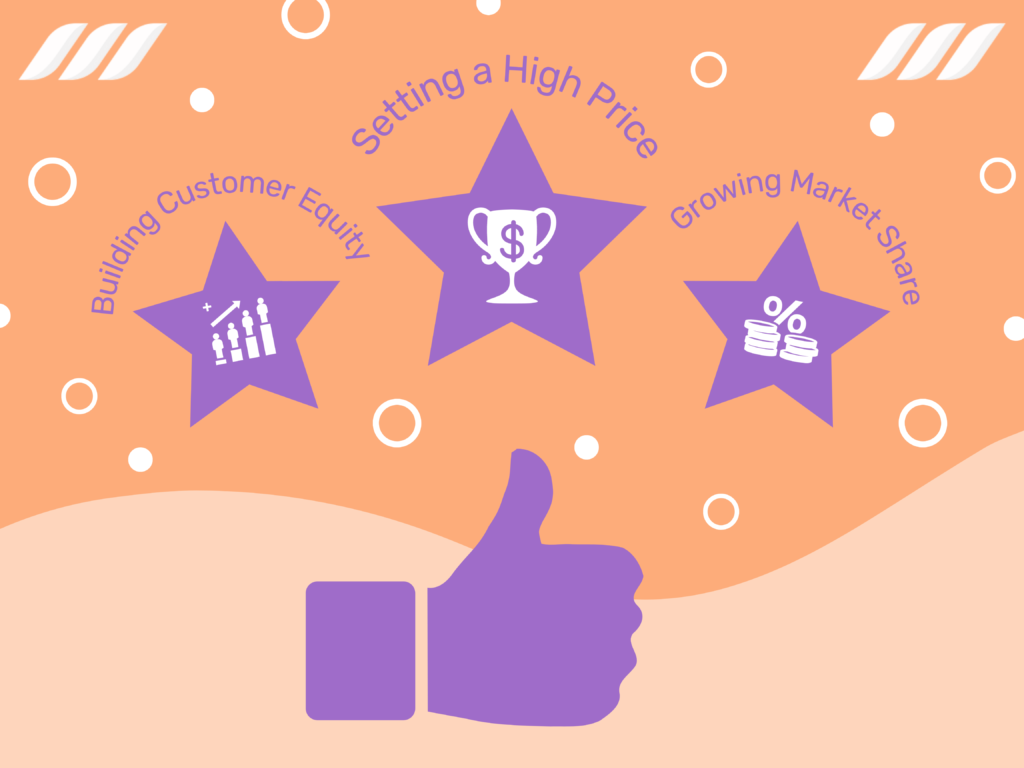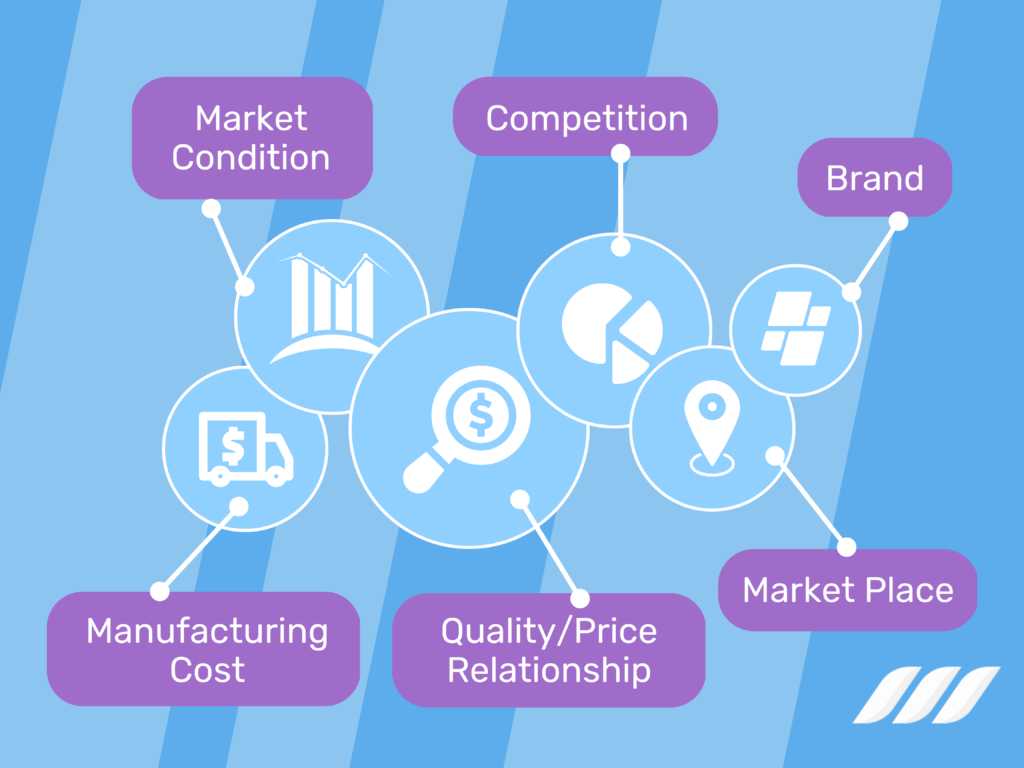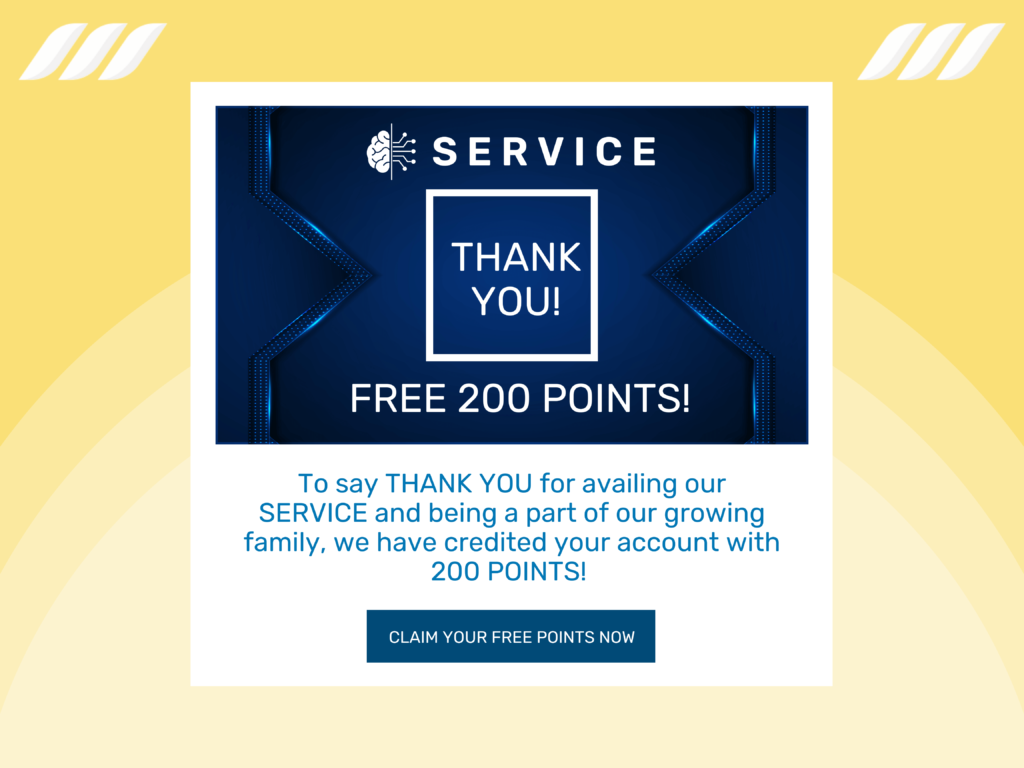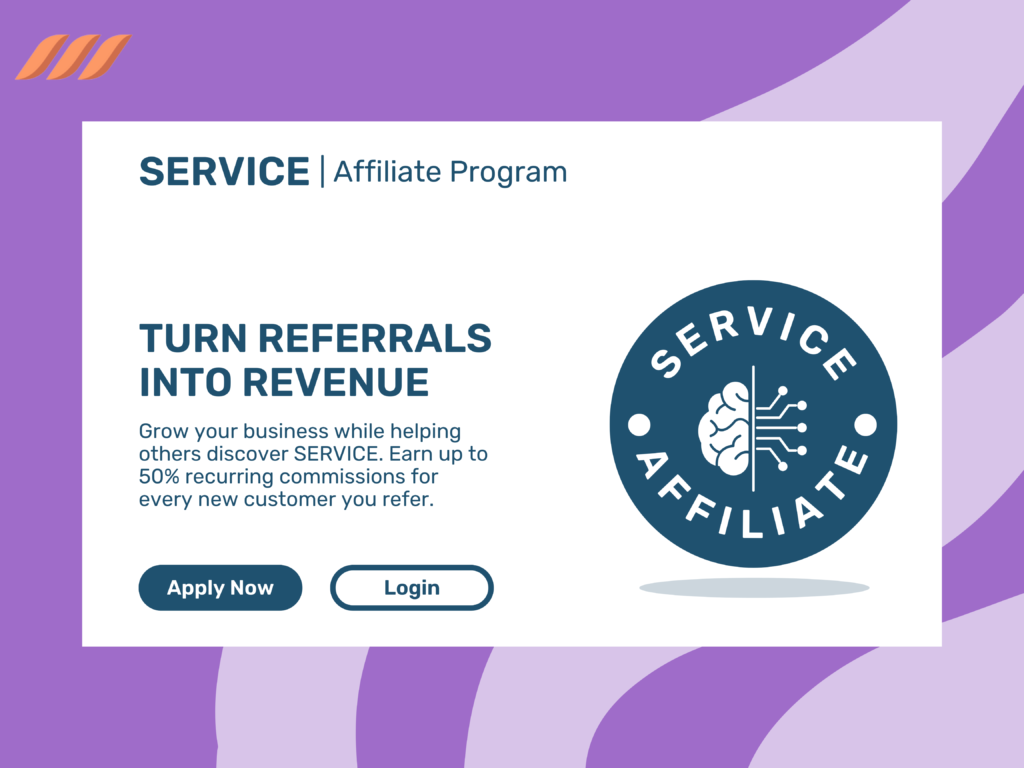|
Getting your Trinity Audio player ready...
|
You might think that your customers will be happy as long as your product or service is useful and solves a problem. The truth is that in today’s saturated market, consumers are becoming more discerning than ever before.
Customers are looking for brands that stand out from the rest by offering something unique and valuable. As such, creating customer value and delivering better customer experiences are key priorities for businesses looking to thrive in today’s competitive marketplace.
In fact, 81% of companies go as far as to say that they view customer experience as a competitive differentiator. Figuring out a customer’s interests can be discerning, but how a consumer evaluates your business can affect brand loyalty. Understanding how to create and sustain customer value can directly impact your company’s success down the line.
This post will walk you through the important aspects of creating value for your customers. But first, let’s discuss the basics of customer value and why it is important for today’s businesses.
What is Customer Value?

Customer value is the difference between the price your customer pays and the benefits they reap from your product or service. It boils down to what value customers feel they received from your product in the face of other possible solutions by your competitors.
Adding value to customers not only entails providing useful services and products but also ensuring that the customer considers it worth their time and money. Also, consider how your customers look at their choice from the perspective of buyer’s remorse. If a customer feels that the total cost of your product outweighs any perceived value, they will regret their decision.
When you add value to customers, it can give your business a better reputation with prospects and leads. This can help supercharge your sales and business growth.

Why is Creating Value for Customers Important?
Most of today’s customers are not interested in making one-time purchases for the sake of an experience — but are invested in fostering a relationship with brands they feel they can trust.
When you reassure buyers that you understand their problems and cater to their needs, they are more likely to become repeat customers. In fact, 56% of customers say they stay loyal to brands that “get them.”
This means taking the time to learn and reap the benefits of customer value creation can boost your sales and promote customer loyalty.
Plus, creating customer value helps businesses offer products and services that meet customers’ needs and exceed their expectations. In other words, businesses create customer value when their products or services are so beneficial to customers that they would be willing to pay more for them than the cost of producing them.
Read also: How to Create an Ideal Customer Profile (ICP)
The Advantages of Increasing Customer Value


Creating customer value is a process that requires continuous attention and effort. The moment you stop focusing on your customers is the moment your company begins to see negative effects.
So, what are the benefits of increasing customer value? Read on!
1. Building Customer Equity
It’s no secret that gaining new customers is pricier than retaining loyal ones, which is why marketers today emphasize the importance of having a loyal clientele. Even a 5% increase in customer retention can double your revenue if you add value to your customers’ lives.
Businesses that maintain high levels of value to customers not only foster long-term relationships with their clients but also maximize the total lifetime value of their customer base.
2. Setting a High Price
Through customer value creation, businesses can sell their products and services at higher prices than their face value. When audiences are reassured that the benefits of your products outweigh the costs, they would rather pay higher prices for the benefits your product offers.
3. Growing Market Share
Value creation allows your business to achieve strategic goals like market share expansion. You can easily strengthen your company’s position and market share by offering competitive prices and impeccable services or products.
Strategies for Creating Value for Your Customers
Whether you are starting out in the industry or have been running for years, here are some strategies to create value for your customers.
Pricing


While price is not the sole deciding factor for customers to buy your product, it still affects the customer’s buying decision. This means by setting a price that represents the financial implications of buying a product or service, you can create more customer value. Setting the wrong price can also affect your brand reputation and revenue.
Setting the wrong price can also affect your brand reputation and revenue. For example, when you underprice a luxury item that customers are willing to pay a premium for, you actually reduce its value or worth. On the other hand, overpricing a low-quality product is just as detrimental since it can repel customers due to a lack of perceived value.
Expecting Convenience
Inconvenience can negatively affect customer value, especially if your product requires only one type of payment method or is only available at a specific location. As such, making it convenient for your customers to buy your product is crucial. Remember, your product might be perfect as it is and still not be worth the effort because it’s not easily available.
Investing Energy
Cost isn’t the only aspect of a product that consumers think about — and often, selling at prices lower than the competition doesn’t necessarily mean you’ll win a greater market share.
A customer also looks at your product from the perspective of:
1) How much time it takes to buy the product.
2) How much effort it requires.
3) Whether the energy and time they spend to buy the product is worth it?


15 Tips for Сustomer Value Сreation
While customer value creation isn’t the only thing that drives a successful business, it’s an essential aspect of building and solidifying your brand image in a heavily saturated marketplace.
Often, customer value is the difference between a business model that fails — and one that is successful.
Read also: How to Add Value to Your Brand or Business
Here are 15 ways your business can create better value for your customers:
1. Differentiate Your Product
Differentiation greatly affects competitive advantage, going as far as to let you target a specific niche willing to pay premium prices. Consider creating a product or service that fulfills a real, tangible need — something that not only attracts audiences to your brand and gives you a competitive edge.
2. Start Off With SWOT Analysis
Once you can know what value your product offers that breaks the competition, make sure to communicate it to your target customers.
It is a good idea to start off with a SWOT analysis – strengths, weaknesses, opportunities, and threats. SWOT analysis helps you evaluate both external and internal factors that are helpful (or harmful) to your brand and its business model.
The outcomes of SWOT analysis will allow you to overcome your weaknesses and tap into more opportunities of creating customer value.
3. Segment Your Audience
Customer segmentation allows you to tweak your marketing strategy, making it more personalized. It lets you tailor your message to resonate specifically with your audience. Further, you can segment your audience to fit their value expectations based on factors such as age, gender, geography, and even seasons.
Segmenting your customer also helps you create more value based on buyer personas. Plus, you can leverage your consumer database to identify unique purchasing behaviors and adapt your product or service values accordingly.
4. Prioritize Quality
While it might work for market leaders such as Amazon and Alibaba, lowering prices to leverage favor with consumers doesn’t always guarantee better market share, especially for B2C companies and small businesses.
In the current market landscape, many customers are willing to pay more for better products and services as long as they get more value.
5. Build Your Brand Image
When you’re talking about lead generation and brand development, customers are more likely to purchase from businesses that echo the same core values and morals as they do.
For one, over a quarter of consumers are willing to pay a 10% premium for sustainable products. Customers prefer to buy from businesses that contribute back to the community and advocate for social causes.
Moreover, authenticity and transparency also help you build a better brand perception and create value for your customers. Communicating your brand’s mission and values through your ‘About Us’ page or even releasing a press release that advocates your mission statement is always a good idea.
Related article: Lead Generation Marketing Trends
6. Incorporate Customer Feedback


Customer feedback is a vital element that can help you improve your product or service and deliver better value. If a customer reaches out to customer support with an issue or grievance, pay close attention and help solve their problems.
What’s more? You can deliver value to your customers just by listening and using their reviews and feedback to improve your product or service. Doing so will also create more value since your customers will feel that your business cares about them and that their concerns are taken seriously.
Consider conducting polls and surveys and putting out reviews and contact forms to collect data that you can use to create customer value.
7. Create Better Experiences
Every customer interaction is an opportunity for your company to create a better customer service experience. A positive experience helps build brand recognition and increases client retention and sales.
But how to create a better customer experience, you ask?
Provide better and timely customer support, send a ‘thank you message’ right after they purchase, incorporate their feedback in product development, personalize your service, add more product features…you name it! There are countless ways to create delightful experiences for your customers.
It’s also important to strive for (and maintain) consistency throughout your interactions with your customers. If a customer interacts with your brand and becomes accustomed to expecting a certain standard of service, one bad experience is all it takes to ruin everything. As such, be sure to make continuous improvements in different facets of your business, including your products, business model, and customer support.
8. Educate Your Customers
Educating customers not only ensures that they completely understand how your product works but also the value it adds to their daily lives.
You can achieve this by providing easy-to-read resources that they can self-study. Blog posts, Youtube tutorials, in-person workshops, and even webinars can help your customers understand the value of your product.
FAQ pages on your company website are also a great option as they allow consumers to find answers to their questions instantly. Find out how to create FAQ page correctly.
9. Improve the Buying Process
As said above, you can create better customer value by improving your product and creating better experiences for your customers. If your customers are unaware or uncertain of the buying process, it can affect their overall experience.
With this in mind, it makes sense to optimize your consumer buying cycle so your customers can easily find the products they want. This will also help your company convert leads into customers more quickly.
Remember that sometimes even a few seconds in the purchasing cycle can make a difference. A little inconvenience during the buyer’s journey can make your leads switch to your competitors.
So, make sure to go out of your way to make the purchase process quick and easy. Also, incentivize purchases through benefits, such as 24/7 customer support, free shipping and tracking, and premium delivery.
10. Inspire and Reward Loyalty


Loyalty programs encourage positive associations with your brand, and they also help you recognize and appreciate your customers for their trust in your product or service. Plus, rewarding loyalty can boost customer engagement with your brand.
Consider introducing reward programs like access to exclusive content, discounts, early access programs, invitations to events, and bonuses.
Loyalty programs give consumers incentives other than your products to remain associated with your brand. Plus, loyalty programs enable you to source customer data ethically while complying with general data privacy rules.
11. Run Attractive Campaigns
Customer interaction is a great way to connect with your audience and generate excitement and curiosity about your product or brand. Hold giveaways, host contests, invest in User Generated content (UGC), and run social media polls to build a thriving community around your brand.
Also, consider incorporating client testimonials and success stories in your promotional content and marketing collateral to boost your brand’s perceived value and draw more customers.
12. Run Compelling Ad campaigns
If you are new in the industry, chances are your target audience has no clue of who you are, what you do, and why they should be interested in your products. Even B2B companies that have existed for quite some time can’t penetrate new markets if they can’t advertise themselves.
Advertisements highlight not only the features of your product but also the benefits for your customers. With so many competitors out there, it is essential that your ad campaigns stand out from the rest. A great way to do this is by creating customer value in your ad campaigns.
Creating compelling ad campaigns involves much more than simply throwing up some images or ads on Google or social media sites and hoping for the best. It requires careful planning and execution of an effective strategy that engages with your target market so they will want to respond to it again in the future.
13. Provide Valuable Content
Content helps you establish trust with your target audience and retain their attention by keeping them interested and excited about what you have to offer.
For example, a blog post or an article about new products or services that you are launching soon can create a buzz in the market and draw the attention of leads and customers.
Also, the quality of your content is a realistic expectation of what consumers can expect from your products and your services. For one, original content such as blog posts, tutorial videos, and infographics will enhance your brand image and credibility in the industry.
You may also want to offer free resources on your company website that can help solve the problems of your customers.
14. Partner With Another Brand


Collaborating with other well-known brands is also a great strategy to create more value for your customers. It allows you to leverage your partner brand’s perceived value to advance your own.
For example, Amazon has a widely established affiliate marketing program — known as the Amazon Associate program — where partners that bring in conversions earn money. If you recommend relevant products and services during the partnership, customers will automatically feel that you understand their needs and care about them.
15. Personalize Your Communication
Personalization is an excellent way to improve customer engagement and generate better conversion rates. But on a deeper level, it makes consumers believe they have a personal, individual relationship with your brand.
Some ways to personalize your communication include wishing customers on their birthdays, adapting your emails to incorporate suggestions regarding their favorite products, and even celebrating company milestones with them.




Customer Value Examples
It is a good idea to learn from real-life examples of customer value creation and incorporate those ideas into your strategy.
Here’s some examples of how businesses create value for their customers.
Example 1: Lush Bathbombs Giveaway
Early April this year, Lush Fresh Handmade Cosmetics announced that the brand would be hosting a giveaway of 100,000 bath bombs across the globe — on their first-ever World Bath Bomb Day.
It was one of the company’s biggest giveaways. Customers got the chance to participate in the giveaway online and in person. The bath bomb represented their personalities and interests.
Also, ‘Lucky Lushies’, members of the Lush customer base, who visited the stores during the giveaway event, had the chance to indulge in a bath bomb cake created by TV stars like Justin Ellen. This experience left the customers stunned.
By marketing the event through celebrity chefs and TV hosts, Lush Fresh Handmade Cosmetics created amazing value for its customers. It involved customers in its events, allowing them to pick bath bombs that they resonated with personally.
Example 2: Facebook’s Cause Marketing
Facebook’s parent company Meta responded to devastating news about floods in Pakistan by announcing a contribution of Rs125 million to UNICEF to aid communities impacted by the floods and support them in receiving water, food, and sanitation.
Before this, however, Facebook was also aiding the flood affected through features like the Safety Check feature, which was activated to enable flood-affected victims to reach out to their friends and family and let them know that they were safe.
Facebook also set up a Crisis page to allow people to ask for help in case of dire circumstances, allowing its users to offer help in such situations. Through in-app feature maximization and fulfilling its corporate social responsibility, Meta has proven itself to go above and beyond for its community, to the point where leading charities have raised millions through the app.
Example 3: Shaq’s Payless ShoeSource
Shaquille O’Neal has been frequently seen wearing the unique sneakers that he designed himself for his NBA games. What fans did not expect is that he would go on to design the same shoes for only $39 for young children and adults who wanted stylish kicks but couldn’t afford them.
Shaq also designed the shoe keeping in mind that it needed to be easy to wear. The shoe was not only designed to be comfortable but also offered extra padding for maximum stability.
In a nutshell, Shaq designed the shoes and created value for customers because he saw there was a need for them in the market. To allow more families to be able to afford the shoes, the price of the pair was brought down almost to cost — and all proceeds went to charity.
Shaq was thus able to solidify his brand and show that he cares more about people than he does about making money – and that it’s the same people supporting him back at the end of the day.




Conclusion
Understanding and learning what your customers need – and offering them quick and easy ways to achieve their goals will become the difference between your business and your competitors. There is no denying that it requires time and effort to create customer value and build and solidify consumer relationships. That said, these 15 tips and examples should be enough to get you started on developing customer value.
![How to Create Value for Your Customers [Tips and Examples] How to Create Value for Your Customers [Tips and Examples]](https://dripify.io/wp-content/uploads/2022/11/4.png)
![How to Write a Price Increase Letter [Tips, Examples, and Free Template]](https://dripify.io/wp-content/uploads/2021/12/27.png)
![How to Write an Effective Collaboration Email [+Templates]](https://dripify.io/wp-content/uploads/2023/05/13.png)



